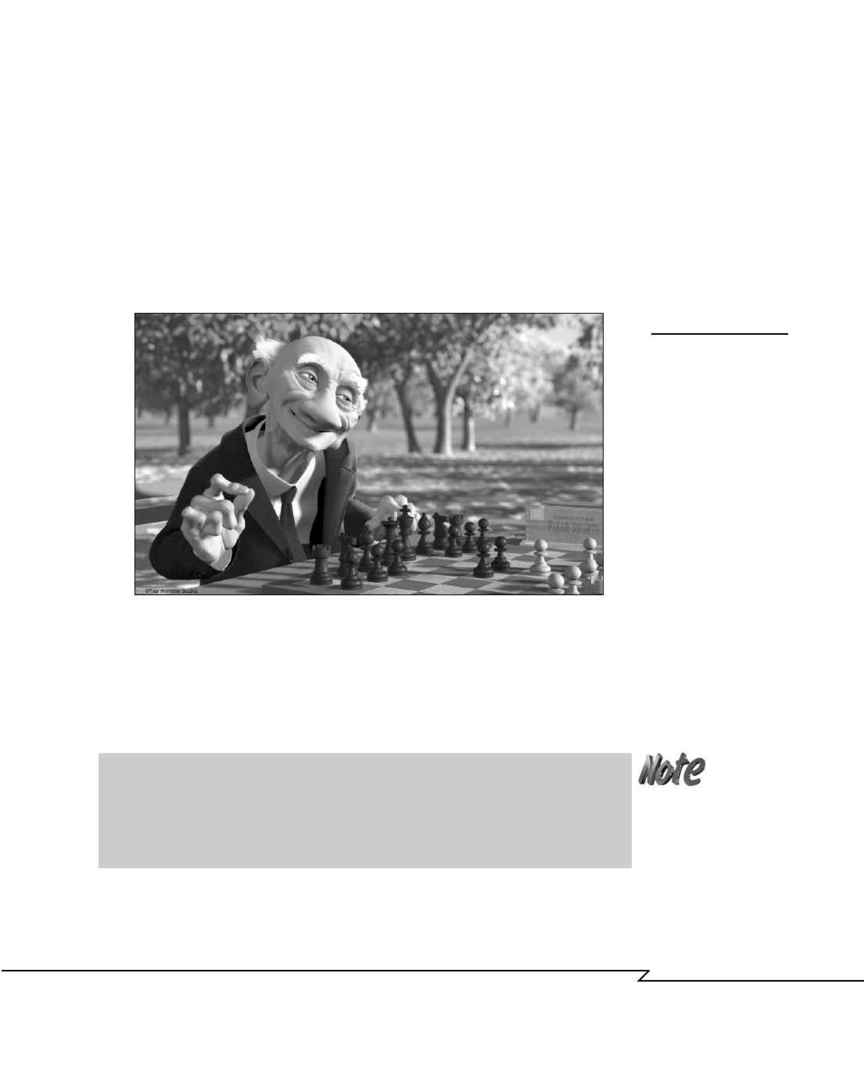Cre@teOnline - The Web Designer's Bible CH04 Page 27

PIXAR experimented with subdivision surfaces in the short film Geri's
Game (directed by Pixar's Jan Pinkava), using the technique to create the
hands and face of a gnarled old man playing a spirited game of chess
against himself (see Figure 4.24). If Geri had been constructed with tradi-
tional high-poly techniques to bring out the lines and creases of his face
and hands, the density of the model would have slowed the animation and
rendering process significantly. The success of the technique on Geri's Game
led PIXAR to use subdivided surfaces on their subsequent film releases
A Bug's Life, Toy Story 2, and Monsters, Inc.
C
H A P T E R
4 : M
O D E L I N G
: B
E Y O N D
T H E
B
A S I C S
173
F
IGURE
4.24
In
Geri's Game,
subdivision surface
techniques were used
to create the careworn
features of the title
character. The process
enables artists and ani-
mators to use relatively
simple mesh that is
increased in resolution
and detail at render
time. Image
1997
PIXAR.
Subdivision surfaces have big implications for the gaming industry as well.
Support for this "variable resolution technology" is being built into com-
puter hardware, which will enable games to rez-up low-poly mesh charac-
ters, vehicles, and environments on-the-fly, giving them greater detail and
realism without making play speed suffer too much.
Another potential tool in your organic modeling arsenal is a deformation cage--a
lattice-like network of control points that can be used to deform the mesh it sur-
rounds. It works a bit like the control points on a NURBS modeling package,
except that it operates on polygonal or parametric mesh.
04 2433_CH04 8/23/02 8:35 AM Page 173
